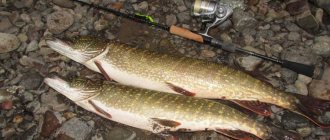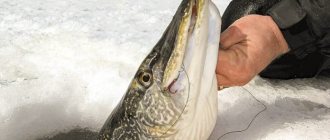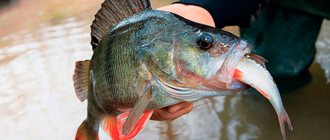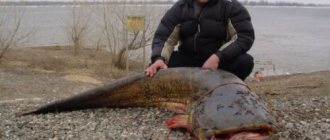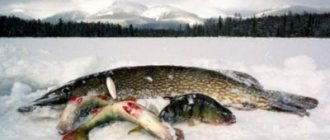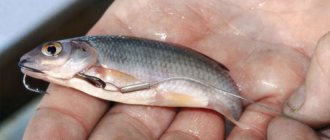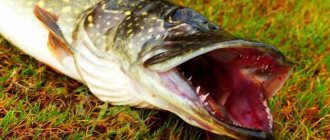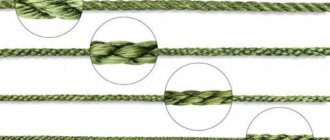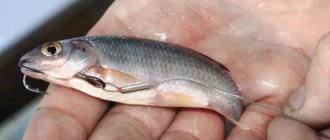Alexey Falaleev | January 26, 2021
When they talk or write about live bait fishing, one of the main topics is the fish with which we are trying to catch a predator with this or that gear. Here you will find the positive and negative aspects of various types of fish used as live bait, and discussions about their optimal sizes for bait. But I can’t remember anything about the process of long-term preservation of small fish from the moment of its capture or purchase until the time when we hook it on a live bait tackle. So let me tell you how my brother and I save live bait between fishing trips.
Is it possible to keep fish alive at home? Of course you can. Brought from a reservoir in a bucket or ditch of water, it may well last until the next morning. So if a morning trip for a predator is scheduled, you can, with peace of mind, put the bucket on the balcony or veranda in the evening, in the chill. But if the next fishing takes place only in two or three days, or even a week, then you need to think about what to do so that the small fish survive.
How to make the “right” water
Think about it, how does everything happen with live bait? Having used up the supply of oxygen contained in the water, he begins to suffocate. And if you notice that the fish keeps coming up to the surface to take a breath of air, you need to take immediate action. One option is an aquarium aerator. If you don’t have one, try pumping up the air by putting a frog pump hose from a rubber boat into a container of water.
Although, as our practice shows, the best prevention of live bait is to periodically change the water in the container where they swim. Full or at least partial. But let's figure out what kind of water is available to us? I’m telling this for those fishermen who live in urban areas.
Even purified with an additional filter, tap water contains elements to which fish do not react in the best way. I won’t delve into the question of how the water that comes into our homes is disinfected, I’ll just say from our experience that it is not very suitable for fish to feel comfortable in a city apartment. It seems to me that using water that is sold at water bottling kiosks is not the best idea from the point of view of financial efficiency.
Although, of course, everyone decides in their own way. Personally, I haven’t tried to preserve live bait this way very often. Usually, all I can offer live bait in the conditions of my city apartment is a partial replacement of water with the one I take from the local city pond. Naturally, it’s not the cleanest there, it’s a city after all, but on the whole my live baits managed to last a day or two on such water.
Here another question comes to the fore. Carrying water in buckets into an apartment from a city pond means creating a precedent of misunderstanding, to put it mildly, on the part of neighbors and random passers-by. So if I ever decided to keep live bait in urban conditions, it was only if the fishing followed quickly enough after this same live bait was caught.
It’s another matter when you have the opportunity to store live bait in the countryside, in a village or in a garden, in general - in a private house. My brother and I have been engaged in live bait fishing for a long time, and the process of preserving live bait in a private home is well established. Let's use our example to see what nuances you need to pay attention to so that the fish remain cheerful for a sufficiently long time.
I'll start with water first. Water from a well drilled on your site (or a collective one) is perceived well by live bait, there is nothing to say here. A little worse, but water from a well is also suitable.
Features of storing live bait
It is well known that any predator attacks first of all a sick and noticeably weak prey. Live bait on a jig hook is very reminiscent of a sick fish, but if it is too lethargic, then the predatory fish will ignore it. But it often happens when, after arriving for fishing and opening the eland, we see that the baitfish has fallen asleep due to lack of oxygen.
Without delving into physiology, one thing can be stated - the fish’s need for oxygen increases with increasing water temperature. Thus, if the water in the canal is too warm and there are a lot of fish, then the live bait will feel oxygen starvation, and the intensity of starvation varies among different species of fish. The most persistent ones are crucian carp and tench, followed by roach, then bream, then silver bream and perch, and finally, bleak, which needs oxygen the most.
Live bait swimming pool
And the next stage is where and how to store this live bait. If you have a basement, cellar or, say, a heated garage with the possibility of a water supply, then you can organize a place to store small fish in a living state. As you understand, we are now primarily talking about the winter period, when it is not possible to store live bait outside the living quarters.
How many options I tried for storage containers, the most successful option seemed to me to be a small bathtub, plastic or metal (photo 1) . It is quite compact, does not take up much usable space, but at the same time holds a good volume of water necessary for a comfortable stay of live bait in it.
Large plastic basins also perform well (photo 2) . I use them when I bring live bait from several fishing trips - and there is simply not enough space for them all together in the bath.
I have heard more than once from fellow bait fishermen that they store live bait in plastic barrels, but I think that this option is not the most successful, and a little later I will try to explain why I think so.
How to maintain a live bait pool
Let's continue. So you brought live bait from fishing, installed a bathtub, filled it with water and are going to transplant the fish. Once upon a time, I noticed a local television report that showed how juvenile fish were being released into one of the region’s reservoirs. So, then it seemed logical to me that before releasing it, water from this reservoir was added to the container with the fry, so that there would be no sharp temperature changes, so that the fish could to some extent acclimatize to the new habitat.
I noted this nuance for myself - and before transplanting live bait from a bucket or ditch, I sometimes first add some volume of water from the bath in which my live bait will have to live in the near future.
How often should the water be changed? Usually I do this once every two or three days, but it is impossible to give an exact and unambiguous answer, because... it all depends on certain nuances. Imagine, in a 50-liter bath you have a dozen standard live bait fish swimming around. Will they need to change the water every other day? Of course not. We have verified that they will live peacefully for a week - and at the same time remain vigorous and active. Here's another example.
If you have more than enough live bait, or they slightly exceed the standard live bait size (it happens that we specifically take large fish in the hope of trophy fishing), then it may turn out that you will have to replace the water in the container almost every day - but what? you can do it! Usually, after I put live bait into the bath, I have to change the water in it for the first time in the morning if I came back from fishing the night before. Well, or a few hours after the baitfish settled in its new habitat. Why? But let me give you an interesting observation.
The fish come with you, plucked from their usual habitat, in which they naturally absorb food with some consistency. So, in these few hours they have enough time to fill the place of their new location, so to speak, with the products of their natural vital activity (photo 3) , and change the water to fresher one - a more than logical step.
What affects shelf life
The safety of live bait depends on the following factors:
- View . Most inhabitants of freshwater bodies are unsuitable for long-term storage.
- Capacity . Should be spacious enough.
- Temperature . It is extremely important that the water in the container is cooler.
- Regularity of water renewal . To extend the life of the fish, the water must be changed frequently.
- Oxygen . The water must be saturated with oxygen.
To feed or not to feed - that is the question
An interesting question: do you need to feed live bait? On the one hand, it seems like why, if in a few days you will go with them to catch a predator. On the other hand, especially if the next trip is not even planned yet, it is logical to add food, because we want the live bait to remain vigorous for a long time.
I will share my observations. At first, for three or four days, the bait fish absolutely does not pay attention to any treat that is offered to it. And this is understandable, because a stressful situation for him, when he was first hooked, put in a bucket, and then released somewhere along with his fellow sufferers, is unlikely to add to his appetite. And the new environment is not very conducive to rushing into the food offered.
But if you have live bait for more than a week, then you can already feed them. The first to adapt to the new food system are minnows and barbels. Behind them are roach, silver bream and crucian carp. The last fish to start eating are roaches and perches. And if I had fish such as bleak or small spruces as potential live bait, then no matter how much I observed, they did not attack the offered treat even after a long stay in the bath. It is quite possible that they were feeding when I left, but it’s hard for me to say anything for sure.
What to feed? Everything is simple here. Under no circumstances should you treat them with bread, porridge or any kind of bait. It can all just turn sour - and you will have to once again carry out a complete change of water in the tank for live bait. Worms? Also no. It’s one thing when your baitfish is hungry and will immediately eat this worm. But if the worm remains untouched, drowns, and then simply lies on the bottom, tossed by the force of the movement of the tails and fins of alarmed fish, then this will not be good. My opinion is clear – bloodworm (photo 4) .
A living and active bloodworm that you have left over from your next fishing trip or, conversely, that you bought before your next trip to the pond. Everything is explained here like this. If the bloodworm is fresh and active, then it will live in the water until one of the live bait living here wants to eat it (photo 5) . And if you give a dead bloodworm, or even worse, a sour one, then it will, like a worm, lie on the bottom, causing a certain percentage of contamination of the habitat of your live bait.
As an option, you can give mormysh (a freshwater amphipod crustacean), but it is rarely sold here, and getting it from a reservoir in order to feed it to live bait is not a very logical step when it is possible to freely buy bloodworms, including food ones. If you have live bait for more than a week, then, as a rule, it eats the offered treat very quickly.
Tool for catching crucian carp
To catch small crucian carp, I use a small fish bait. Of course, fishing with a little wren is not very sporting. But it can be very difficult to provoke even small crucian carp to bite in the last week and a half before freeze-up. And catching enough of it to use throughout the winter season is even more difficult. A few words about the correct setup of the little fish before fishing. The length and width of the mesh should not exceed 1×1 m. The mesh of the assembled baby doll should be taut, with a slight sag allowed in the center. I do not recommend using a malyavochka with built-in side walls consisting of the same fabric. On the one hand, the built-in walls protect the fry from leaving when the fry is pulled ashore or into the boat, on the other hand, sometimes everything happens the other way around. In late autumn, crucian carp are inactive. Only on fine sunny days can it move in small flocks in the middle layers of water and slightly higher. The rest of the time, it settles at the bottom and simply does not fall into the walled tank. Fishing with smallmouth is possible from a boat and shore. From the shore, catching fry in most cases is done with the help of a pole and an auxiliary flyer. Fishermen are accustomed to cutting them out of young coastal trees. In addition to a careless attitude towards the forest, this is not entirely convenient - a pole made of raw wood is heavier and, with constant lifting of the toy, quickly deforms. As a pole, I use the simplest fiberglass telescopic fishing rod with rings. The length of the telescope varies from 4 to 6 m. I install a small inertial coil in the reel holder. It is desirable that it have a lever switch for the holding brake for more convenient adjustment. A nylon thread with a diameter of 11.5 mm and a length of 10-15 m is wound on the bobbin of the reel. On a pond, I pass the thread through the rings and tie it in a knot on the crosspiece of the little fish. This way you can easily adjust the length of the rope both from the boat and from the shore. Moreover, when fishing from the shore, you can do without a slingshot stand, holding the rod in your hand.
Live bait, there are enemies all around!
The next question is whether it is necessary to close the container with live bait with a lid? Some may say that it is not necessary, because... free access of air to the surface of the water is blocked. I say unequivocally - a lid is needed.
Firstly, even if you think that it will block the access of air (although in any case, complete sealing, of course, will not be achieved), it is better to resolve the issue by periodically replacing the water in the container.
Secondly, if you have pets, cats, then believe me, they will not fail to supplement their diet with fresh fish. And even if the animal is well-fed or is generally indifferent to fish, then, when it sees the living creatures swimming, it will definitely try to catch them purely out of interest (photo 6) .
And thirdly, quite often the bait fish simply jumps out of the bath. Why is this happening? A new unusual habitat, stress from moving, strange noises in the immediate vicinity - and, please, there are always a few fish that are either at the moment of loading them into the bath, or, especially, when changing the water, and sometimes just at the moment when you throw food or check their condition, they will definitely try to leave the bath.
Having jumped out, and especially having fallen somewhere under a container, they, naturally, can die if we do not notice it in time. Now I practically don’t experience this, but at first it happened. My advice to those who plan to store live bait at home is to take the time to make lids for containers for storing fish. It’s better to take care of this issue and make neat, tight-fitting lids that are suitable in size (photo 7) than to close the container at random - and think about whether your live bait will jump out if something happens.
By the way, I’ll tell you how I personally change the water. Using a small bucket I scoop it up to half the bath or a little more. Then, through a regular watering hose from the water supply system, I supply water to the bathtub (photo . And, I repeat, at this moment you need to be especially careful, because the fish, perhaps perceiving the stream from the hose as a river current, goes against it - and often tries overcome it by jumping out of the bathtub.
Who are the “record holders” in this matter? I say with confidence - Yelets. It’s good that my brother and I rarely use this fish as live bait, but if they are caught and we are forced to take them, we know that we need to be more attentive to them than to any other fish.
Do different species of fish, which have now become live bait, coexist in the same container? Yes, as long as I can remember, there were no problems with different types of fish in one place. Yes, if live bait of different species come from different fishing trips, then it is logical to put them in different containers (photo 9) , but in general we do not make any divisions “by race” and usually store all the fish together (photo 10) .
Do they eat each other? Everything is not complicated here either. Even if it is a predator - say, a perch, but it is about the same size as a roach or silver bream, so it will not attack them, preferring, if it gets hungry, the same bloodworm that we feed them all with.
Of course, it happens that we have more or less large perches and small sedges swimming together in our bathtub, but we have not seen any obvious signs of eating (enlarged bellies of predators). Separately - for example, in a basin or some other large container - we only place ruffs separately from other fish, but this is understandable - after all, by secreting mucus, these spines can not only cause inconvenience to other live bait, but also easily create uncomfortable conditions for their life.
True, we purposefully harvest ruff if we plan to catch burbot, and so, for ordinary girders and the usual pike and perch, we take, of course, more attractive, in our opinion, live bait. Although it is not necessary to completely exclude the ruffe from the point of view of using it as live bait for the same pike - there were examples when a toothy one was caught precisely on this inconspicuous and peculiar fish.
Techniques for catching live bait in winter
Fishing for live bait is extremely reminiscent of so-called sports fishing: lightweight tackle, a nod that is sensitive to bites, thin fishing line, and a jig with low weight and size. All this desire for lightness and minimization is a direct consequence of the fact that this gear is designed for catching small fish.
Like any winter fishing, fishing for live bait is preceded by drilling a hole. The place for it is chosen where small fish are most likely to be found, i.e. this is a deliberately shallow place, up to three meters, with very weak currents or in standing water.
Live bait is caught using bait consisting of bloodworms, burdock larvae, worms, and jigs attached to a hook (their biting activity is affected by their color). It is best to take jigs that have one side black and the other light. This combination of colors attracts both small roach and perch well. The bait fishing rod is balanced under the angler's hand.
How to preserve live bait in a reservoir and during transportation? There are special containers for this - cans. But to avoid freezing and death of live bait, it is advisable to line the factory cana with a heat insulator or immediately purchase a lined container.
The fight for life
Does live bait die during storage? Happens. It seems like you’re changing the water, keeping an eye on its cleanliness, and feeding them, and suddenly - suddenly! - and the fish, which was previously active and mobile, suddenly stops showing signs of life. Why this happens - I have no answer. And here I return to the issue of storing live bait in barrels.
If they are swimming in a barrel, it is much more difficult to notice that one of the baitfish has died. And having died, the dead fish begin to poison the habitat of other live bait, which, as I believe, along the chain gradually leads to the death of other fish. It is much easier to notice a deceased fish in a bathtub or basin.
I will dwell on one more point. Keep in mind that when you return home and bring back the live bait you have caught, you should not immediately release them all into the prepared container. Will explain. When catching live bait, it happens that you hook someone unsuccessfully, someone may have had their gills damaged. And already at home, when you see that in a canoe or a bucket that arrived from fishing, some live bait is either swimming on its side or with its belly up, it is better to put them in a separate small container and just watch them.
If you see that there are sedentary fish, you should not immediately take them for food or give them to the cat - give them a chance to recover. And who knows - perhaps it is on one of these live baits that the same trophy bite will happen in the future while fishing.
If you place them together with other lively and active live bait, then there is a high probability that they will die, but if they sit separately for some time, then yes, they often come to their senses and come to life. After a few hours, when you see that these live creatures have come to their senses, you can safely add them to the rest of the fish, which during this time have also calmed down significantly.
One more thing. Previously, without much thought, we manually collected live bait from the bath. They simply caught them with their hands, transferring them from a large container to a bucket or can. Of course, sometimes it was inconvenient, often it took a significant amount of time, but for some reason we did not pay attention to this process, because it seemed that everyone had always done this. And when the understanding came that it was possible to catch live bait with a net, a painful question arose: why didn’t we use it earlier? Children's stores have similar nets all over the place.
You can do it yourself, there is nothing complicated about it. Personally, it took me less than an hour to make a handmade net (photo 11) , but how much time was saved in the process of catching fish before going fishing is impossible to calculate.
Therefore, categorical advice: use nets to catch live bait, which you plan to use for fishing (photo 12) . By the way, if you decide to completely replace the water in the container, or clean it, then this net will also help you out in the best possible way. We transplanted the live bait into a bucket, drained the water from the bath, washed it, filled it with fresh water, launched the live bait, again transplanting it using a net.
Storage methods
It must be remembered that the viability of the fry depends on a number of factors:
- Oxygen regime;
- Temperature conditions. A sharp change in temperature is as destructive as oxygen starvation, but a gradual change in temperature is acceptable;
- You cannot dilute colder water from a reservoir with warmer tap water.
Storing live bait at home
Preserving live bait in winter at home is quite simple. To do this, you need to place it in a container that will serve as an aquarium. It is better to purchase a quality product in which the fish can live for a month or longer. A large selection of aquariums is presented in a specialized store at https://zoocool.ua/akvariumistika/akvariumy/.
As an option, eland is used, which will serve as a “storage” for live bait in the reservoir. To maintain the required oxygen regime, an aerator is connected. You can use the industrial production model, and you can make it yourself quite easily.
For a homemade aerator you will need a ball cylinder or any other rubber bladder. A regular gas or water tee is placed on the tip of the cylinder. From one end, a tube with a sprayer is lowered into the water with live bait, and a regular rubber bulb is attached to the free end to inflate the chamber.
A homemade aquarium is placed on the balcony or in the refrigerator. If this is not possible, then you can carefully wrap the canna with rags, creating something like a thermos.
It must be remembered that over time the fish becomes more lethargic. But this is not scary, because a sluggish fish is perfect for catching pike in winter, which will happily grab it. By using available methods for storing live bait in winter, you can always go fishing with bait that attracts many species of predatory fish.
Storing live bait during winter fishing
One of the most common ways to store live bait during winter fishing is to store it in a plastic bottle. Holes are drilled in it, and it is lowered into the hole on a rope. But this method has a number of disadvantages:
- small capacity;
- inconvenience of removing the fry.
You can also store live bait in a canna, under which a special hole is drilled. In this case, you will have to periodically remove the icing and add fresh water.
The old method of storing live bait should not be ignored. A blind hole is drilled in the ice, in the bottom of which a hole smaller than the size of a fish is made. It will fill with water on its own and will be an excellent natural aquarium.
But these methods are ineffective for winter fishing on girders, when you have to often move from hole to hole. In this case, two plastic buckets are indispensable. One larger one, which is installed in the snow or tent, and the second smaller one, which is used when moving between the flags of the vents. For this type of winter fishing, this is the easiest and most convenient way.
Thus, by ensuring the storage of live bait while fishing in winter, you can count on catching predatory fish.
This method allows you to preserve fish all winter . You can even use a steel mesh pipe that matches the diameter of the hole. The optimal pipe length is 2 m . The storage place should be clean, with a solid bottom, and preferably with little current.
Zhivtsov Forecast Bureau
I am sure that those who like to breed fish at home will agree with me that the behavior of the inhabitants of the aquarium can be used to judge how they will feel in natural reservoirs at the moment.
Let me explain in relation to our question. If the fish in the home bath are active, cheerful, and pounce on the offered treat, then it is likely that if you go fishing now, you can return from it with a good catch, we have been convinced of this more than once.
If the temporary inhabitants of the bath are lethargic and inactive, standing almost motionless at the bottom, then, most likely, they are influenced by atmospheric pressure, an approaching change in weather or some other weather anomaly, and on this day and in the reservoirs there is generally a weak bite. Not the Hydrometeorological Center, of course, but an additional source of information for thought and analysis.
How long do we store live bait?
By and large, one batch of live bait stays in our home containers for one to two weeks. If, say, weather conditions or some other reasons interfere, then maybe a little longer, but usually we catch live bait one weekend, and go out for pike the next. There are variations, but in general the picture looks something like this.
The longest period for live bait to be at home - about a month, sometimes a month and a half - is the autumn off-season, when we stock up on live bait in open water and take it out onto the first ice.
It seems that the first ice season is the time of activity for all fish, both small and large, but, believe me, it is much more comfortable to arrive at the place with already prepared live bait than to try to catch it, especially when your fellow fishermen have already occupied the fishing spots and are taking the first trophies the coming season of hard water. Yes, it turns out to be a little more troublesome. Yes, you have to feed this off-season live bait, but, I say unequivocally, the joy of being able to unhinderedly arrange the girders immediately upon arrival at the reservoir is very worth it. I’m sure this has happened to you too, when a predatory fish seems to be active, but as luck would have it, the live bait doesn’t bite...
Ways to catch live bait in winter
Catching live bait in winter is not an easy task, but sometimes it is very necessary.
Using a jar
With the help of a jar, just like in the summer, you can also catch live bait in the winter. The main thing is that the size of the hole allows you to squeeze a 3-liter jar into it. And yet, the second option is more suitable - a plastic bottle with a large number of holes. It is much easier to both immerse and remove from water, since water quickly pours out of the container through many holes.
Using a scarf
A scarf is a special tackle for fishing in winter. It is called a scarf because it has a triangular shape. It is not a sports fish, but you can catch small things with it if you use a net with small cells. For successful and simpler use, it is necessary to punch a hole so that the scarf can easily submerge in water. The technique for using the scarf is the same as for the screen. Practically, this is the same tackle, which differs only in its shape.
Screen (TV)
The screen presents a grid connected by a rectangle. The same does not apply to sports equipment. The principle of fishing is the same as with a scarf, but a wooden block is used to tension the net. The design also includes a cord, with the help of which the screen is lowered into the water and pulled out of the water. Naturally, catching live bait in winter is accompanied by a number of difficulties to which you have to adapt.
Using a firecracker
This is a fairly effective tackle for fishing at any time of the year, both summer and winter.
Appearance
This design consists of two arcs connected movably. If both arcs are opened, you will get a circle with a diameter of 1 to 1.5 meters. The frame is made of wire with a diameter of 8-10 mm. Inside the circle there is a fine mesh mesh fixed around the perimeter of the circle. A rope is attached to the top of the arc. There should be two such ropes, since there are two arcs. The length of the ropes should be such that the tackle can lie on the bottom of the reservoir.
Techniques for catching live bait with firecrackers
Before starting the process, the cracker should be opened to put bait into it. You can not just lay it down, but also secure it. After this, the firecracker is closed and sent into the water. But before that you need to punch a hole of a certain size. When the cracker sinks to the bottom and the ropes are loosened, it will open. Before you pull it out of the water, you should pull both ropes sharply so that the firecracker closes. After this, the caught fish will not go anywhere.
With the help of a winter fishing rod you can successfully catch live bait for catching predatory fish. In this case, even small perch will do. To do this, you need to take a fishing rod with a thin fishing line (0.08-0.1 mm) and a small jig weighing up to 4 g. A “devil” type jig will do. It is advisable to have a fairly sensitive nod installed on the fishing rod.
Create comfortable conditions for live bait
Live bait fishing, of course, is impossible without the use of live bait. For this fish you separately go to the pond, for this fish, perhaps, you go to the store and buy it. But, in any case, live bait is the basis of such fishing. Therefore, create comfortable conditions for live bait, try to preserve it both at home and during fishing. And, I’ll say separately, give live bait a chance.
What does it mean? Will explain. If I’m traveling with girders and taking with me a supply of live bait, then no matter how the fishing turns out later in terms of predator activity, before heading home I usually release the live bait (photo 13) . So what if I don’t catch live bait for my next fishing trip? Of course I'll catch it. And these little fish will live because they deserve a chance to be free. Once upon a time, in one video about fishing with girders, an angler said that this live bait already had six holes in its back, there were two bites on it - and, of course, he would definitely release such a hero at the end of this fishing.
But will such a fish survive and is it worth releasing it at all? Everyone decides in their own way, but although I love live bait fishing, I try to release both unused live bait and any small predator that I catch, which is what I wish for you.
